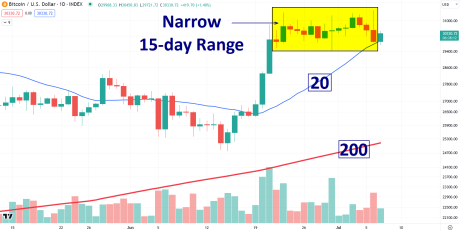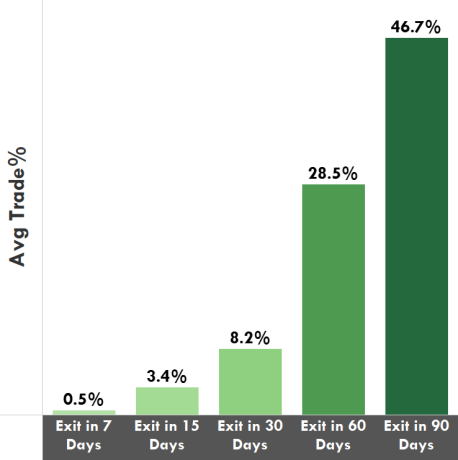Reason to trust

How Our News is Made
Strict editorial policy that focuses on accuracy, relevance, and impartiality
Ad discliamer
Morbi pretium leo et nisl aliquam mollis. Quisque arcu lorem, ultricies quis pellentesque nec, ullamcorper eu odio.
The recent deluge of spot Bitcoin ETF applications sparked a major mid-June rally for Bitcoin. While the number one crypto asset managed to conquer the 30,000 level as a result, Bitcoin’s price has otherwise fallen into a tight range in recent days and only managed a single close above 31,000. Let’s examine whether this narrow Bitcoin price range suggests a big move ahead or more sideways movement for the foreseeable future.
Another Narrow Base For Bitcoin
Following June’s large advance, Bitcoin’s price has continued to trade sideways, falling into a tight range of less than five percent from its highest close to its lowest close over a recent fifteen day period. While not an every day occurrence, there have been thirty-six such bases in Bitcoin’s modern history (2011 – present) if using a relatively short-term holding time of seven days. In short, it’s just another narrow base for Bitcoin.

Bitcoin Daily Chart | BTCUSD on TradingView.com
What does this recent tight base suggest for Bitcoin’s price? To find out, we’ll look at all signals since 2011, adding an extra condition which better describes current market conditions with respect to Bitcoin.
Potential Big Move In 90 Days
In addition to requiring a range of less than five percent from its highest close to its lowest close over a fifteen day period, our extra condition requires that Bitcoin’s price also closes above its 200MA. This additional condition filters out narrow bases during periods of downward price momentum and better describes Bitcoin’s current technical state amid an improving macro environment.
The holding time graphic below illustrates Bitcoin’s historical tendency for only modest gains in the short-term, with an unimpressive +0.5% average hypothetical trade using a 7-day hold, a meager +3.4% average trade using a 15-day hold, and a more respectable 8.2% average trade using a 30-day hold.

Bitcoin Holding Time Stats | SOURCE: Tableau
Beyond the short-term time horizon, however, Bitcoin’s history suggests a much brighter outlook with a slightly longer 60-day holding time, returning a +28.5% average trade from 2011 to the present. From a more intermediate-term perspective, however, the 90-day hold time sees Bitcoin’s average trade stats jump meaningfully higher to +46.7%.
DB the Quant is the author of the REKTelligence Report newsletter on Substack. Follow @REKTelligence on Twitter for evidence-based crypto market research and analysis. Important Note: This content is strictly educational in nature and should not be considered investment advice. Featured images created with Tableau. Charts from TradingView.com.























